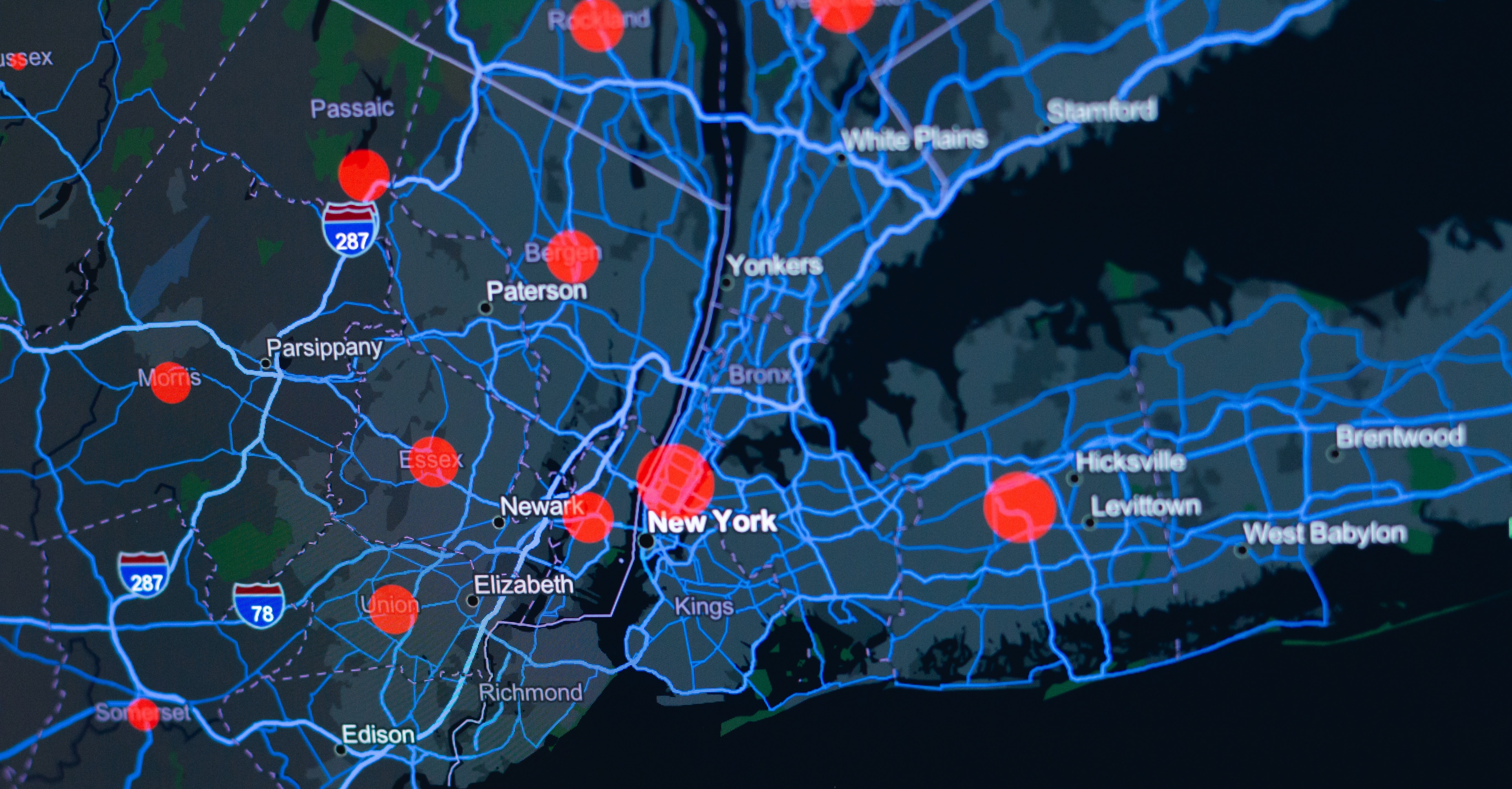Newsletter
The transmission methods of COVID-19 have been a continuing point of contention for many inside and outside of the medical community. The World Health Organization, basing many of their decisions on previous outbreaks of MERS and SARS, as well as the outbreak in Wuhan, China, only recognizes contact-based and droplet-based transmission of COVID-19. Others in the community warn of potential airborne transmission through aerosolized viral particles.

Because of the confusion regarding this topic, and to update previous articles we have written on this subject, we decided to clarify some topics related to the spread of the novel coronavirus. Namely, we hope to answer:
- Does COVID-19 spread through the air?
- What is the difference between droplet spread and airborne spread?
- Is airborne spread possible for the coronavirus?
- Why does the WHO not recognize possible airborne transmission?
- What should you do to protect yourself from an airborne virus?
Let’s get started.
Does COVID-19 Spread Through the Air?
Yes, COVID-19 is confirmed to spread through the air. This does not mean that it is airborne (read more on that below), but it does mean that some droplets released when people sneeze, cough, talk, or even sing can carry infectious viral particles.
What Is the Difference Between Droplet Spread and Airborne Spread?
This is where things begin to get cloudy.
When talking about diseases, there are many ways for them to spread. With COVID-19, the main transmission methods we are looking at are contact, droplet, and airborne spread. Contact spread was confirmed right at the beginning of the outbreak, so the only remaining two we need to think about is droplet and airborne spread.
The World Health Organization separates droplet and airborne spread largely based on particle size. For airborne spread to occur, viral particles must be present in droplets smaller than 5 microns in diameter, either as droplet nuclei or aerosolized viral particles (solid particles suspended in air). These tiny particles can be carried over distances greater than 1 meter (roughly 3 feet), and may hang suspended in the air for several hours.

Activities like talking or singing can release virus-laden droplets into the air.
Droplet spread is far more limited. Droplets with diameters larger than 5 microns that contain the virus are much heavier, settling on surfaces much quicker than droplet nuclei or aerosols and traveling much shorter distances. Transmission occurs when particles land on bodily opening, such as the eyes, nose, or mouth, or the particles are inhaled.
The line between airborne spread and droplet spread is very thin, and it can be hard to identify with certainty that viral particles can be aerosolized and remain viable. Just because viral RNA is found in the air or on particulate matter does not mean that the virus is airborne. Viruses are not technically living, and the presence of RNA does not automatically mean the virus is still infectious. Only if the virus is found in sufficiently small particles and is still infectious will it be considered airborne. Likewise, the virus may only be viable in amounts insufficient to infect an individual.
The repercussions of airborne spread make it crucial to identify the transmission pathways of COVID-19. Some of the world’s most contagious diseases (think measles and tuberculosis) are airborne diseases, so we need to know if we have an airborne pandemic on our hands. Unfortunately, identifying these pathways is not always easy.
Is Airborne Spread Possible for the Coronavirus?
Now we come to the crux of the matter: can SARS-CoV-2 (the virus responsible for COVID-19) remain viable and transmit as an airborne pathogen? The answer is mixed.
There is some support for airborne transmission. SARS-CoV-2 has been aerosolized in a laboratory setting, but these results may be limited in a real-world setting, and such a study must be replicated to confirm the results.
Other studies on the effectiveness of various mitigation techniques reveal that activities designed to protect against airborne viruses also protect against COVID-19. This evidence indirectly supports airborne transmission, but the study itself is logically flawed; the converse of a true statement is not automatically true.

The strongest evidence (so far) comes from medical expert opinion. Over 200 experts came together in an open letter to the World Health Organization, urging them to recognize airborne transmission. For them, the technical differences separating droplet and airborne transmission are too rigid; the five micron differentiation is very artificial, and the novel coronavirus is effectively spreading through the air regardless of particle size.
Is there evidence that airborne spread does not occur? No, but this is almost impossible to do. It is very, very tricky to prove definitely that something does not exist. In a comprehensive study of about 75,000 cases in China, airborne transmission was not reported.
So, we can conclude the following: yes, airborne spread may be possible, but we can’t say for sure yet. Confirmation of this would require months, possibly years, of research that we don’t have right now. Approaching COVID-19 as an airborne virus would maximize protection measures, which can’t hurt given the current situation.
Why Does the WHO Not Recognize Possible Airborne Transmission?
Throughout this pandemic, organizations like the World Health Organization (WHO) have been in a precarious situation. Many people, inside and outside of the scientific community, look to the WHO to set recommendations. Much of the WHO’s power comes through faith that its recommendations are fact-based, unbiased, and helpful.
As people turn to the WHO for answers, they must be very careful not to hastily publish data or information that may be later rescinded. The lack of information about COVID-19 limits exactly what the WHO can say, as there are very few things we can yet say for certain. As such, they currently state that contact and droplet transmission of COVID-19 occurs, largely sidelining airborne transmission.

Many in the scientific community disagree with this action, as identifying COVID-19 as airborne would only make people take it more seriously and appropriately combat COVID-19, even if it isn’t airborne. However, publishing unsubstantiated claims designed to manipulate the public into taking measures may be harmful in the long run, and the general public may lose trust in such organizations as the CDC, WHO, and others.
What Should You Do To Protect Yourself From an Airborne Virus?
While we don’t know for sure if the novel coronavirus is airborne or not (as of the writing of this article), it is a definite possibility. Either way, some of the lessons we learned from other airborne viruses can be applied here. If COVID-19 is not airborne, these precautions will not hurt, and some also apply for droplet transmission.
- Minimize proximity- Airborne viruses can spread easily through everyday interactions like talking and breathing. Removing yourself from close-contact situations and properly social distancing will help reduce the risk of catching COVID-19.
- Wear a mask- Wearing a mask will help prevent you from transmitting COVID-19 if you’re presymptomatic. For more information about what mask to wear, check out our article here.
- Stay home- Staying home is a sure-fire way to protect yourself. If you live with others, be sure to maintain your distance from them, especially if they frequently venture out.
- Turn on an air purifier- We discussed HEPA purifiers and the novel coronavirus in a recent article. While purifiers will not completely protect you, it will boost your indoor air quality and may remove some viral particles.
- Wash your hands- After landing, SARS-CoV-2 can remain infectious on surfaces for up to three days. Frequently wash your hands to avoid transmission from settled particles.
If you like this post, feel free to check out our other blog posts on the COVID-19 topic:
- Can HEPA Air Purifiers Protect You From the Coronavirus (COVID-19)?
- Can Masks Protect Against Coronavirus (COVID-19)?
Kaiterra provides air quality monitors and an IAQ analytics dashboard for healthy buildings and offices, helping workplace leaders and healthy building pioneers assess and improve their indoor air quality. Our indoor air quality monitors like the Sensedge and the Sensedge Mini can be found in many of the world’s most iconic buildings and workplaces, such as the Empire State Building and the Burj Khalifa.






.png?width=200&height=148&name=Menu%20C%20(2).png)

.png?width=307&height=228&name=Menu%20-%20D%20(1).png)
.png)




